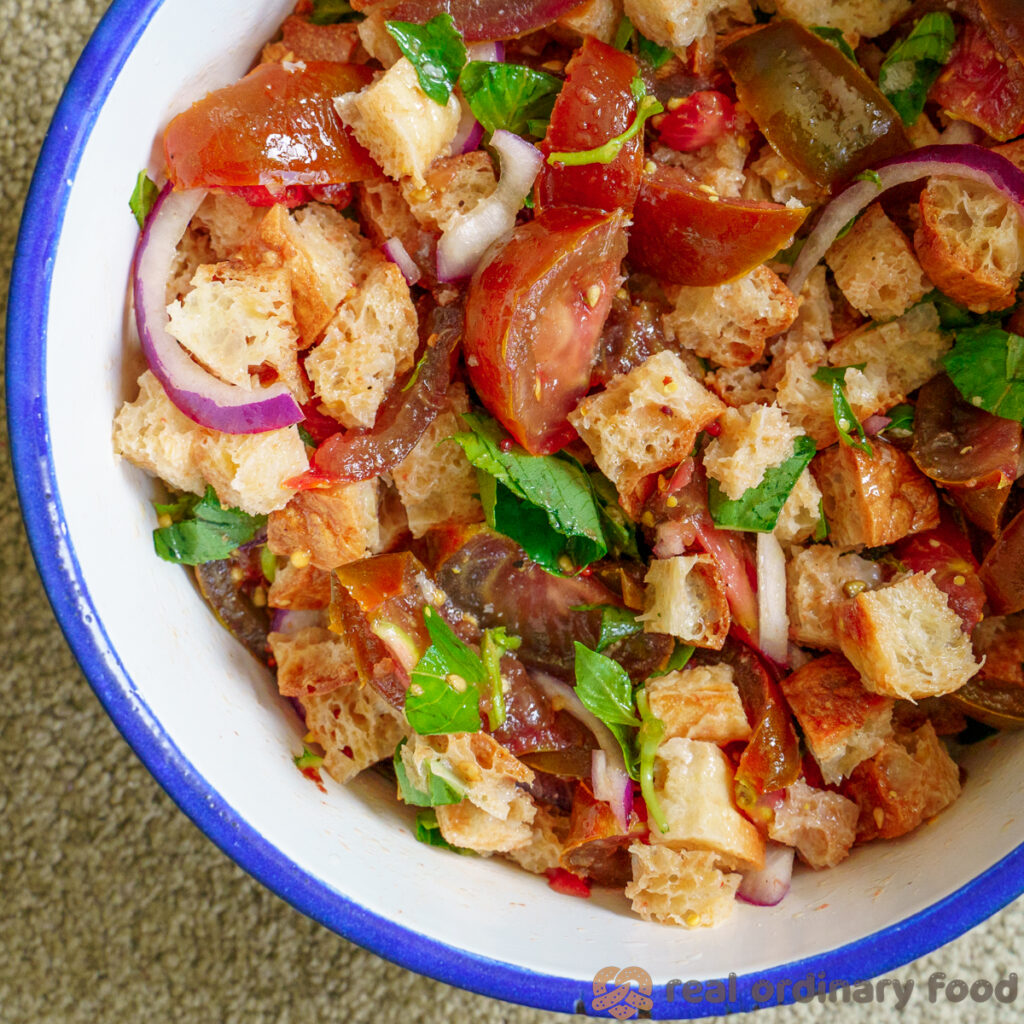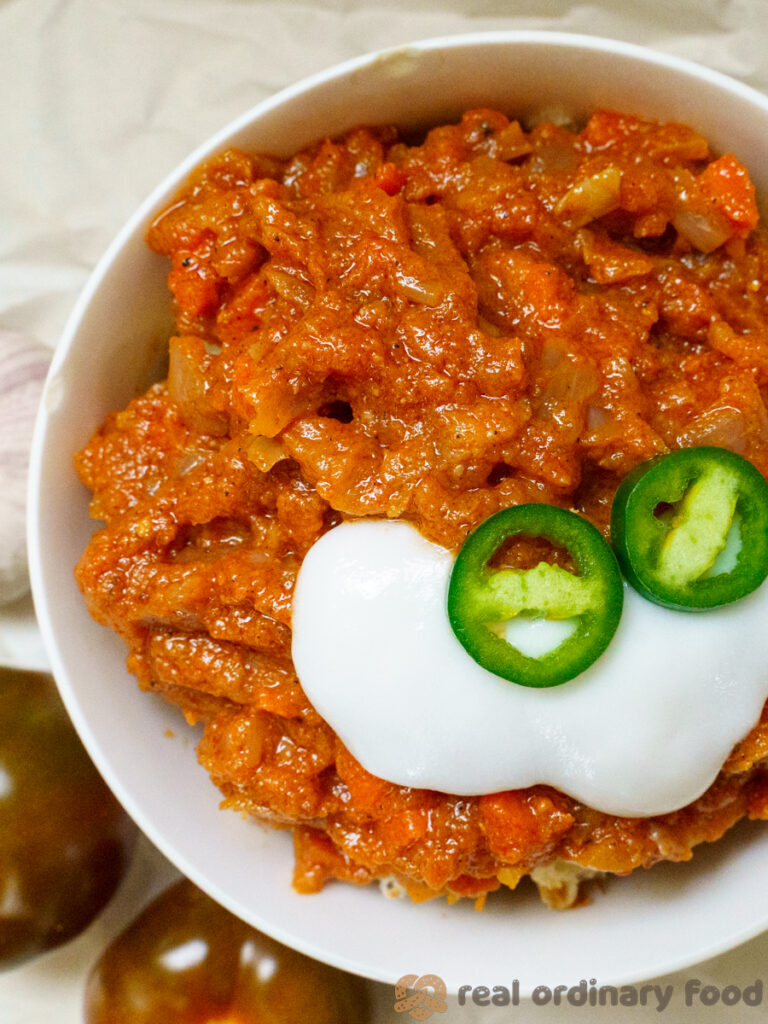Silsi is a spicy, tangy tomato sauce fortified with onions and carrots and seasoned with berbere, the defining spice of Eritrean cooking. It likely arose out of the mingling of Italian and Eritrean food culture following Italian colonization at the turn of the 20th century. (Berbere seasoning is a ubiquitous spice blend in Ethio-Eritrean cuisine. If you plan on doing any Ethiopian or Eritrean cooking, it’s an absolute must-have. For more information on this spice mix and how to make it yourself, visit this Berbere Spice recipe.)

How to Use Silsi

Silsi is like any thick, chunky tomato sauce but with a more flavourful kick. You don’t have to limit yourself to Eritrean recipes when using it: it works well in this Afghan eggplant casserole or over this spinach pici pasta. You can even dollop a few spoonfuls into this Turkish lentil soup or this okra chickpea stew.
I’ve even eaten it cold, dipping into it with leftover bread or injera scraps. And apparently, silsi is regularly enjoyed for breakfast in Eritrea. What I’m saying is, try adding it to whatever tomatoey recipe you’re making, and you can’t go wrong. Below are a couple of classic Eritrean recipes that use silsi:
Pasta al Sugo e Berbere

As residents of a former Italian colony, Eritreans eat loads of pasta. Pasta al sugo e berbere is a prime example of Eritrean-Italian fusion cuisine: it’s basically spaghetti tossed in a Bolognese sauce that’s seasoned with berbere. You can use silsi in place of tomato sauce in pretty much any pasta recipe, as they do in Asmara, the capital of Eritrea.
For this meal, I cooked 75 g of Catelli Smart® spaghetti in just enough water to cover, then stirred in 3/4 cups of silsi.
Eritrean Fata (ፋታ)
Fata (ፋታ in Tigrinya) is an Eritrean lunch specialty that is somewhat similar to the Italian panzanella salad. But instead of fresh sliced tomatoes, it uses warm silsi sauce. The full name of this dish is “fata mis celeste banee,” which means “fata with three bread.” It’s as simple as tearing up three crusty bread rolls into a bowl and dousing them in silsi. To be extra #fancy, you can top it with some yogurt (I used Soy Cashew Yogurt) and jalapeño peppers.


Ngl, I enjoy fata way more than panzanella. Maybe that’s because this is less salad-like to me, and you know I’m biased against salads!
Italo-Eritrean Cuisine
For over half a century in the not-so-distant past, Italy colonized various parts of Eritrea. The former has left its mark on the latter in many ways, not least of which is food. (In fact, Eritrea’s traditional dishes can be roughly classified into three cultures: Muslim, Orthodox Christian, and Italian.) But this relationship goes both ways, as Eritrean cuisine has gained footholds in Italy as well. Tomatoes and pasta are two staple foods that were popularized by Italians in Eritrea.
I couldn’t find many sources on the origins of silsi, but this source implies that it came about following Italian colonization. That makes sense to me given its similarity to Italian tomato sauce recipes. But if you know more about silsi’s history, please share it with me and I will update this post.

How are you using silsi in your cooking? I’d like to hear about your creations, so comment below with what you’ve cooked up!
Recipe Card
Did you make this recipe? Please consider leaving a rating below to let me know how you liked it.
You can also take a picture and tag me on Instagram @earthtoveg, I will shout you out in my Stories!

Silsi (Eritrean Tomato Sauce)
Use Imperial/Metric buttons below to toggle between volume vs weight measurements. I recommend weighing out your ingredients for best results.
Ingredients
- ¼ cup sunflower oil or other neutral oil see Note 1
- 1 large red onion or 2 small
- 1 carrot
- 1 jalapeño pepper *optional
- 1–2 tbsp Homemade Berbere Spice or use any storebought version
- 1 tbsp tomato paste
- 1 large tomato or 1/2 can diced tomatoes
- ½ head garlic
- ½ tsp fine salt or 3/4 tsp kosher salt
- ½ tsp ground black pepper
- 1 tbsp lemon juice *optional
Instructions
- Shred the onion, carrot, and jalapeno pepper using a grater or food processor (I find that this gives me a better texture than dicing; it's important to get the veggies chopped very fine but but not puréed).
- Pour 1/4 cup oil into a saucepan on medium heat, then add the shredded veggies. Sauté for around ten minutes or until lightly caramelized and starting to stick to the pan.
- Meanwhile, chop the tomato and mince the garlic, or pulse together in a food processor.
- Add 1–2 tbsp berbere seasoning and 1 tbsp tomato paste to the saucepan and sauté for another minute, then add the chopped tomato and garlic, along with salt and black pepper.
- Lower the heat to minimum and simmer, uncovered, for 30–45 minutes, stirring occasionally to prevent sticking and burning on the bottom.
- When the tomatoes have broken down and the sauce is a nice thick consistency, remove from heat and squeeze in 1 tbsp lemon juice.
Notes
- Oil: Any neutral-tasting oil is fine for this recipe.
- Berbere: Start by adding 1 tbsp of berbere seasoning, and then add more to taste near the end of cooking, if you would like a more heavily-spiced sauce.

This was really lovely!
I’m so glad to hear that. Thanks for your review 🙂
A wonderfully tasty sauce. Love thsi!
Silsi is delicious isn’t it 😋